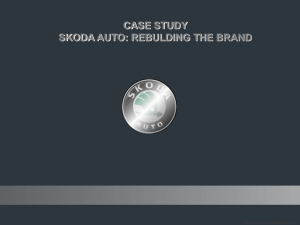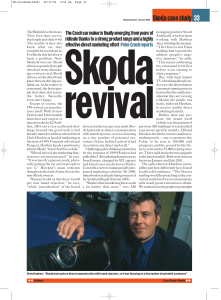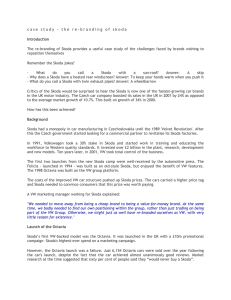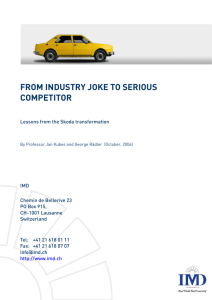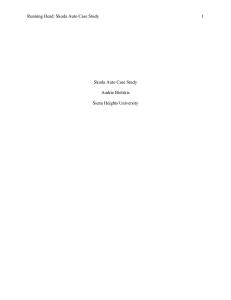Question 1.4.4 – Skoda Auto a) Internal stakeholder groups
advertisement
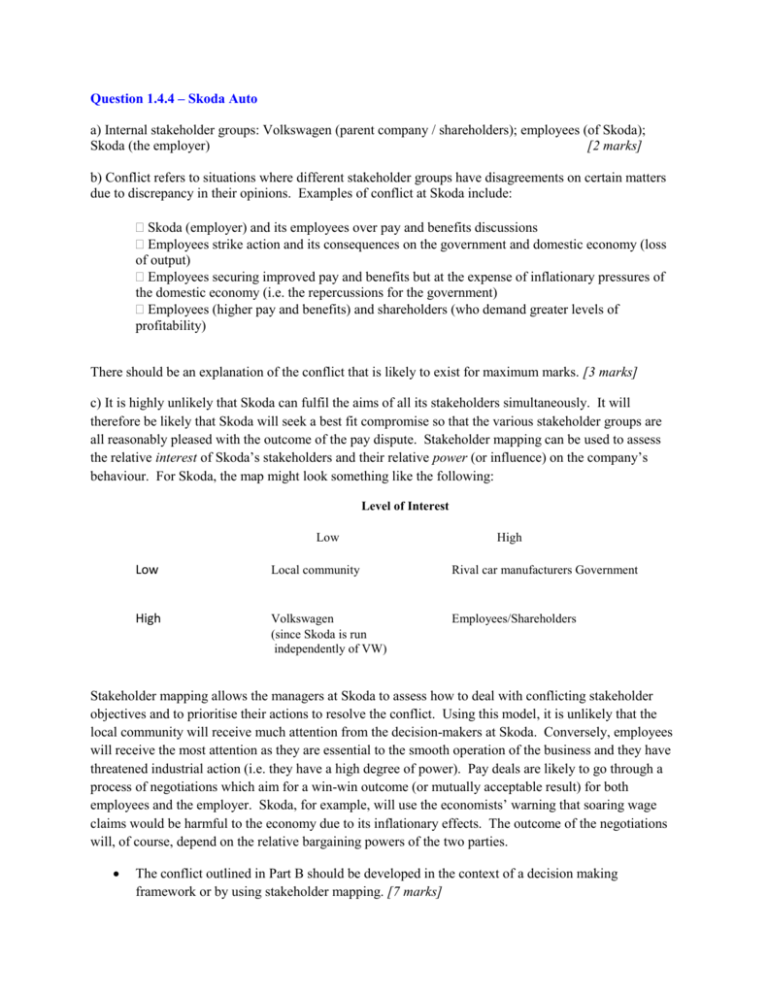
Question 1.4.4 – Skoda Auto a) Internal stakeholder groups: Volkswagen (parent company / shareholders); employees (of Skoda); Skoda (the employer) [2 marks] b) Conflict refers to situations where different stakeholder groups have disagreements on certain matters due to discrepancy in their opinions. Examples of conflict at Skoda include: Skoda (employer) and its employees over pay and benefits discussions Employees strike action and its consequences on the government and domestic economy (loss of output) Employees securing improved pay and benefits but at the expense of inflationary pressures of the domestic economy (i.e. the repercussions for the government) Employees (higher pay and benefits) and shareholders (who demand greater levels of profitability) There should be an explanation of the conflict that is likely to exist for maximum marks. [3 marks] c) It is highly unlikely that Skoda can fulfil the aims of all its stakeholders simultaneously. It will therefore be likely that Skoda will seek a best fit compromise so that the various stakeholder groups are all reasonably pleased with the outcome of the pay dispute. Stakeholder mapping can be used to assess the relative interest of Skoda’s stakeholders and their relative power (or influence) on the company’s behaviour. For Skoda, the map might look something like the following: Level of Interest Low High Low Local community Rival car manufacturers Government High Volkswagen (since Skoda is run independently of VW) Employees/Shareholders Stakeholder mapping allows the managers at Skoda to assess how to deal with conflicting stakeholder objectives and to prioritise their actions to resolve the conflict. Using this model, it is unlikely that the local community will receive much attention from the decision-makers at Skoda. Conversely, employees will receive the most attention as they are essential to the smooth operation of the business and they have threatened industrial action (i.e. they have a high degree of power). Pay deals are likely to go through a process of negotiations which aim for a win-win outcome (or mutually acceptable result) for both employees and the employer. Skoda, for example, will use the economists’ warning that soaring wage claims would be harmful to the economy due to its inflationary effects. The outcome of the negotiations will, of course, depend on the relative bargaining powers of the two parties. The conflict outlined in Part B should be developed in the context of a decision making framework or by using stakeholder mapping. [7 marks]
